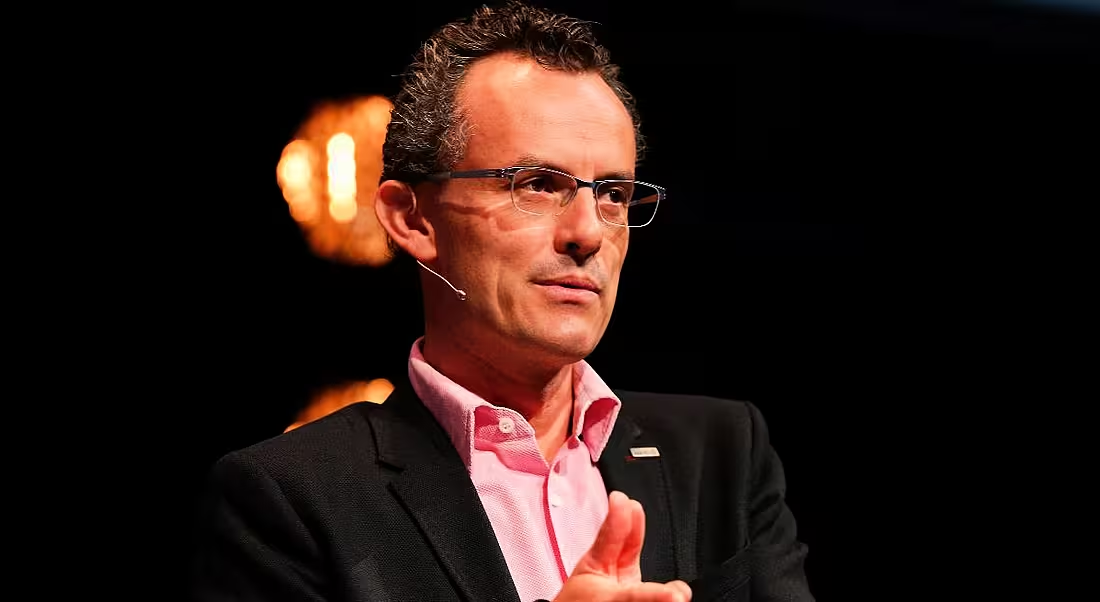With a renewed focus on how our working environment can affect our health, the time has come to rethink the workplace with humans at its heart.
This week, the world was engaged in the public health initiative of promoting awareness of mental health – acknowledging its existence, addressing its inhibitors, and opening up conversations that are necessary so that many suffering from mental health problems can unload and bring their struggles into the light.
The theme of this year’s World Mental Health Day (observed annually on 10 October) was ‘Mental health in the workplace’. After all, common disorders such as depression and anxiety can impact our ability to work. In fact, a study led by the World Health Organisation published in April 2016 estimated that depression and anxiety disorders cost the global economy $1trn each year in lost productivity.
Looking closer to home, an Opinion Matters survey of 2,000 people across the UK and Ireland, commissioned by Aramark Northern Europe, found that 53.4pc have experienced or are experiencing some type of mental illness, including depression, anxiety and panic disorders.
‘The core need of people at work is self-fulfilment. And that self is, necessarily, a human self’
– THOMAS JELLEY
The idea of cultivating a happy, healthy workforce makes economic sense when the risk of lost productivity is taken into account. There’s also fierce competition for talent – particularly in the high-skilled STEM (science, technology, engineering and maths) sectors – prompting employers to create idealised work environments in order to attract and retain staff.
That said, the fact that employers are seemingly only motivated by economic – not ethical – imperatives to treat their employees well doesn’t exactly invoke a warm and fuzzy feeling inside.
Sodexo, another global food services and facilities management company, unearthed an overwhelming sense of neglect in its own in-depth study of knowledge workers in the UK. In partnership with Quora Consulting, it surveyed 2,800 knowledge workers in the UK and found that just over one-third (34pc) believed their organisation really cared about their wellbeing. Less than half of those surveyed (48pc) would even trust their managers to do the right thing by them.
Oh, the humanity
Of course, there are many factors that contribute to our overall health and wellbeing, including diet, exercise, sleep patterns, alcohol intake and social issues, to name a few. But the workplace – being where many of us spend a significant portion of our adult lives – has an undeniable role to play.
The needs of a workforce are as fundamental as any basic human requirements: space, nutrition, mobility. And then there are the factors that can make or break an environment: lighting, noise and group morale. It seems simple: give your workforce a bright, spacious and quiet space to work, with as much nourishment for their brain as their belly, and there you have it.
“I think the more enlightened organisations and workplaces that are the best able to make use of what’s available to us with today’s technology are those that bring the multidisciplinary teams together and really focus on human-centric approaches to work and the workplace,” said Thomas Jelley, vice-president of the Sodexo Institute for Quality of Life.
The human-centric approach to workplace design is, Jelley explained, sensitive to our bodily needs and the way we respond through our senses, while also recognising the fundamental drivers of satisfaction at work.
“From what we can see in Sodexo, in our work, the core need of people at work is self-fulfilment. And that self is, necessarily, a human self.”
Working with robots
And so, while future-workplace concepts more often grab headlines with visions of robots stealing our jobs, the real thought-provoking work is exploring how to better bring humanity back to the workplace.
‘It’s not about tech controlling humans. It’s about collaboration’
– THOMAS JELLEY
In fact, Jelley recently led a round-table in Singapore exploring the introduction of intelligent robotics and increasingly AI-led automation to the world of work. This think tank concluded that our robotic future will be collaborative, not combative.
“It’s not either-or. It really is not a competition between humans and tech. It’s not about tech controlling humans. It’s about collaboration,” he said.
And, when you think of it, there are some jobs squidgy, fragile humans should willingly give over to the machines. Automation and technological assistance can significantly improve health and safety in dangerous workplaces. Think of those people dealing with containers of hazardous materials, or tasked with repairing electrical wiring atop a towering mast. In the future, we may look back on how humans performed these tasks as the foolish risks of a more primitive era. The modern-day factory worker would struggle to survive a day’s work at the dawn of the Industrial Revolution.
Modern workplace hazards
That’s not to say the modern workplace is hazard-free, and sometimes the pressures we put on our human selves aren’t so obviously physically demanding. Working antisocial hours, for example, can keep you from meeting up with family and friends in more typical timeframes. Additionally, constant night shifts can disrupt your circadian and metabolic rhythms.
Increasingly sedentary lifestyles with hardy machinery taking care of tough manual labour also raises the spectre of an increasingly unfit society, and Jelley cites an “overwhelming” focus on diet over physical activity, when really both are important to overall fitness.
“Certainly, over the last few decades – over the last century, even – our lives have become a lot more sedentary. That said, if we do end up having a little bit more leisure time, one of the good uses of that leisure time would be increased levels of physical activity, not just slouching around engaging in screen-based activity,” he said.
However, having more time to get active, cook a healthy meal and socialise with friends doesn’t necessarily mean we’ll all do it. We are humans full of flaws and it’s not always in our nature to do what we know is best for our wellbeing. “A lot of the time, when we have more time, we don’t use it very wisely,” Jelley cautioned.
“We have to be careful about how excited we get about the prospect … of having more leisure time. It’s fine as long as we are confident – and it’s not always born out in reality – that we can put more free time to good use.”
Today, though, employers are increasingly recognising the value of workplace experience design that promotes people getting up and about, changing places, moving from a desk to a focus area to a meeting room, or having a stand-up meeting by a high-level table. By making sure that all the things that we need aren’t clumped together, the environment itself creates the need for physical activity. It sounds a banal solution to ensure the printer, the coffee machine and the bathroom all require a trip to a different place, but adding these small, frequent movements to everyday work can have a significant impact.
Too busy to think
Then there’s the burgeoning ‘always-on’ lifestyle of non-stop work, which can be severely detrimental to mental wellbeing. Regulators in France have taken this so seriously that they began 2017 with the introduction of a law prohibiting email outside of working hours.
“In the absence of regulation, a lot of it is down to behaviours of individuals and, in particular, leadership,” said Jelley. The technology is available to allow line managers to be in constant contact with their team, but there is also technology that can help them rein that behaviour in and schedule those messages for a more appropriate hour.
This conduct can even be unconscious, where a senior employee doesn’t realise that their attitude to work directs the working lives of others. To counter this, Jelley advises being “mindful with a small ‘m’”, in that we should pay attention to our actions and their consequences.
“Pushed to the extreme, one of the consequences of appearing to be always, always on, the message to other people is that you have to be always busy,” said Jelley. And being busy all the time, if we are honest with ourselves, leaves very little time to think.
“If we equate busy with noise, busy with activity, then we deny ourselves the opportunity to have those moments in which we might not know what we can expect. But it’s very often in those moments of quiet stillness that we see the solutions to a problem that we’ve never seen before, or … we frame the problem in a new way, in a way that is helpful.” These breakthrough moments of inspiration, Jelley said, tend not to come when we’re running around at a hundred miles an hour being ‘busy’.
And, finally, there’s the promising siren call of more creative freedom at work, enabled by robots taking on the menial, the repetitive, the tedious. In this utopia of free-flowing ideas, we must not forget the satisfaction that can be derived from more routine tasks. Not everyone wants to be tasked with generating new and exciting ideas all the time, and happiness can just as often be found in knowing you can perform the same function well every time.
Workplace experience design
In essence, technology’s invasion of the workplace with actual robots has forced a new perspective. Instead of seeing the workforce as mindless automatons, we now have the actual machinery to do that. The rest of us are humans, individuals with multifaceted and variable needs, and expect to be treated as such.
This rethinking of the workplace puts the consideration of its primary users – the workers – first. It also increases the likelihood of catering to fringe use cases, moving away from standardised models that squash everyone into the same box. This process can be transformative for people who are differently abled or have more unique requirements.
“I think that is definitely one of the spillovers of human-centric approaches and design approaches,” said Jelley.
“The human-centric design approach starts off with the needs of people and one of the things you do in these approaches is you look at people, you look at different personas, different types of people, and you sketch out their journey, their experience. You look at their needs, you look at their pain points and you are trying to address them. It’s a potentially much more enlightened and enlightening approach than to say, ‘I need 120 people in this space, fit them in.’”
Instead of constantly seeing new technology, approaches and concepts as threats, we need to also start recognising the opportunities they bring. “Technology does allow us to personalise things, increasingly, so here’s to more human-centric approaches, more design and experience-based approaches to address these pain points and, in so doing, set more and more of us up to be able to contribute at our best and enjoy it.”




